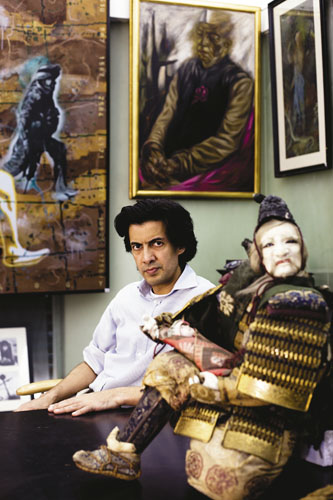
The Year that Was: The Broken Paddle
Flamboyance and grandeur marked out Neville Tuli as India's best-known art messiah. Today the collapse of his fund has revealed he got it all wrong
Neville Tuli became the best-known spokesman of the country’s art and launched the world’s largest art fund. Then he fell from glory with the plunge in the art market, struggled to pay his investors and stared at the risk of losing all that he created.
Tuli had told Forbes India on January 16 that the art holdings of the fund have now been sold and the firm is awaiting payment from buyers.
As things stand, the financial picture looks bleak. Estimates based on due diligence done by KPMG for Dubai-based Abraaj Capital, an investor of Osian’s, reported Osian’s debt as Rs. 133 crore for the year ended March 2009.
Tuli founded Osian’s in 2000, which runs a self-supported auction house. By 2005-2006, Tuli’s company had reported revenues of Rs. 65 crore and a healthy profit of over Rs. 11 crore. In June 2006, he announced the launch of an art fund amid an economic boom. A clutch of banks led by BNP Paribas and ABN Amro referred their wealthy clients to buy units in Osian’s Art Fund.
Initially, Osian’s art fund appeared to be a thumping success. Investors were, however, blind to one small detail: Neville Tuli practically decided the value of the stock as he had hand-picked every piece of work.
“As an auction house, you don’t sell art from your own stocks. The integrity of the process can get breached and [it] gives rigging a chance,” says Harsh Goenka, one of India’s leading industrialists and a prominent art collector.
Osian’s auction house bought and sold art on behalf of the fund.
In the middle of 2009 when the fund closed, investors were just about digesting the fall in the market but at least expected to be paid what was due. But for five months, even that didn’t happen. Finally, Osian’s told investors that it would send out cheques in December second week. However, it managed to pay only a few investors. Tuli then told the two foreign banks that had referred the fund to their clients that he would not be able to meet the deadline.
Osian’s, the company, was gasping for cash liquidity as revenues from the auction house dried up. The KPMG report said various entities and individuals owed Osian’s more than Rs. 100 crore, more than a third of which was owed as advisory fees for setting up the India Asia Arab Art Fund (IAAF).
However, the fund never got off because it did not find enough takers.
When Osian’s Art Fund was launched, an advisor with a foreign institutional investor concluded that it was too risky to bet on. There were only 12 paintings in Indian contemporary art until then to have fetched a value in excess of Rs. 3 crore. “The market seems to be quite small for the size of the fund,” he wrote to his bosses.
The advisor’s observations turned out to be uncannily accurate. Osian’s Art Fund was a big fish in a small pond. Now the pond has little water and Osian’s is struggling for breath.
- This article was earlier published in Forbes India magazine dated February 5, 2010
WHY DID WE DO THE STORY
It was one of those occasions when you start discussing a story and end up doing quite another. Sometime in mid-2009, a newsroom discussion took place on a government move to reform the royalty regime for artists. It was the time when every field of investment was reeling under the impact of the global financial meltdown. The art market was no exception.
One of the test cases for the direction of the art market was coming up for redemption in July 2009: The Osian’s art fund, the biggest in our market with a corpus of over Rs. 100 crore and run by Neville Tuli, a man who can be best described as a flamboyant gambler. There were rumours that all was not well with the fund and that its net asset value had been propped up. It was an irresistible story to pursue.
As we dug deeper, we found that the rumours were only the tip of an iceberg. Tax officials were alleging fraud and improper trading in art, one Osian’s investor had sued an offshore company owned by Tuli for breach of contract and banks were breathing down his neck to repay loans.
WHERE DOES THE STORY STAND
But the biggest problem facing Tuli was the ire of investors in his fund. He kept on extending the redemption date but never could come up with money to pay them all.
At last check, Tuli was still to pay investors in full. On March 25, 2010, a commercial court in London found Tuli and his offshore company Bregawn to be in breach of a contract with Dubai private equity fund Abraaj Capital, Osian’s biggest investor.
In a recent note to investors titled It has been the best of times, the worst of times…, Tuli wrote: “Unless institutions take on the challenge of building great platforms like Osian’s, there is no chance that we will one day have a value system rooted in the creative spirit of the human being, more free from the binding forces of cold economic logic and the blindness of religious animosity.” Well, until the big bubble burst, Lehman and Morgan Stanley were considered to be at the fine edge of human creativity, unbound of cold economic logic.
(This story appears in the 04 June, 2010 issue of Forbes India. To visit our Archives, click here.)
Post Your Comment















